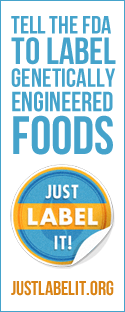|
The first year of life is critical to development of the human gut microbiome. The changes in relative abundance of different families and species of bacteria that colonize the gut during that first year can be delayed or changed by factors including whether delivery is vaginal or by cesarean section, whether infants are breast- or bottle-fed, and early exposure to antibiotics. A Canadian researcher team has used bacterial gene sequencing to analyze the changing abundance of different gut bacteria in infants from 3 months to 1 year of age. Their results found that infants who are bottle-fed rather than breast-fed, and to a lesser extent those who are delivered by cesarean section rather than vaginally, develop gut colonization features that have been linked with food allergies.
Also read, Breastfeeding moms who eat peanuts reduce the risk of child having allergies, study finds. “Our goal was to characterize the combined influence of cesarean delivery, antibiotic treatment, and formula-feeding on the development of gut microbiota in infants," explained Anita Kozyrskyj, Ph.D., a researcher at the University of Alberta, Canada, who led the study. "We found that, compared to vaginally born and breast-fed infants, formula-fed or cesarean-delivered infants had different trajectories of bacterial colonization in later infancy, which could have implications for their future health." The studies are published in Frontiers in Pediatrics, in a paper entitled “Cesarean Section, Formula Feeding, and Infant Antibiotic Exposure: Separate and Combined Impacts on Gut Microbial Changes in Later Infancy.” Our understanding of gut microbiome development is founded largely on descriptive studies of the abundance of different bacterial taxa with increasing infant age, either in the presence or absence of common perinatal exposures, the authors write. Next-generation sequencing (NGS) techniques have allowed more complete analyses of microbes in infant stool samples. “Yet many questions remain,” they admit. One of these questions, is “How much of a deviation from the gut microbial succession a vaginally born, antibiotic-free, and breast-fed infant is sufficient to predict an outcome such as food sensitization.” To gain more insight into microbiome development in infants, the researchers used a technique known as significance analysis of microarrays (SAM) to analyze the bacterial DNA from over 1000 gut microbial species in 166 paired fecal samples of full-term infants at age 3 months and at 1 year. Using this technique, the team was able to quantify changes in bacterial gut colonization, according to birth mode (vaginal/cesarean), breastfeeding status (yes/no), and antibiotic use (yes/no) by three months of age. Prior research has shown that there are typical patterns in the types of bacteria that inhabit a growing infant, but the Canadian research is among the first to study the rates of colonization for each type of bacteria with infant age and highlight which bacteria dominate as the gut microbiome evolves over time. The results showed that vaginally delivered, breast-fed infants who were not exposed to antibiotics within 3 months after birth exhibited a unique trajectory of gut microbial development in later infancy. In contrast, cesarean delivery, exposure to antibiotics, and the absence of breast-feeding all impacted on the how the gut microbiome developed and the relative abundance of specific bacterial taxa. Compared with the normal progression of gut bacteria with infant age, formula-fed or cesarean-delivered infants showed trajectories of colonization among bacterial families that have previously been linked with food allergies and with rapid weight gain. The authors acknowledge that larger studies will be needed to increase our understanding of how changes in the infant microbiome impact on health. “Ultimately, the collective assessment of these microbial parameters will contribute to our understanding on what is normal gut microbial development in infants and what deviations from normal development predict future disease,” they conclude. SOURCE GEN (Genetic Engineering & Biotechnology News)
0 Comments
Leave a Reply. |
Advertisement
News & Updates
Stay informed with the latest news around foodservice, agriculture and other related food news. Advertisement Opportunities
|


 RSS Feed
RSS Feed


